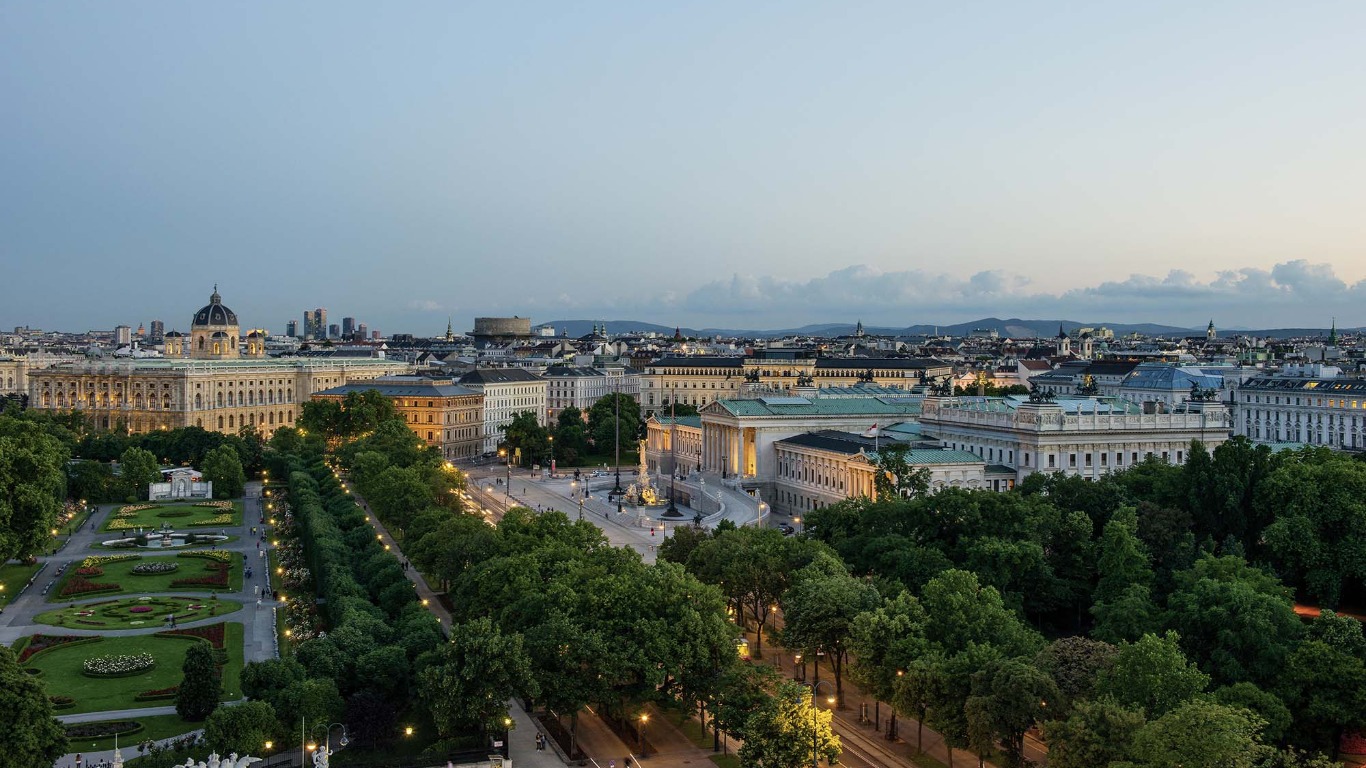Explore Vienna: top things to do, where to stay and what to eat
One of Europe’s grandest cities, Vienna might seem all high-brow museums, serious history and grand architecture. Walk its streets though and you’ll get to know a destination that effortlessly blends its past, present and future.
Why go to Vienna?
Throughout history Vienna has been one of the most significant cities in Europe. Once the capital of a great empire and the home of the House of Habsburg, who ruled for over 600 years, traces of this powerful family are woven into the fabric of the city. Lovers of music and art, the Habsburgs nurtured some of the greatest talents, from Titian to Mozart, while using their wealth to amass an invaluable collection of art and foster grand architecture through the centuries.
Although history runs deep in Vienna, you’d be a fool to think it’s all imperial splendour, baroque palaces and horse-drawn carriages rumbling along its cobbled streets. The pomp and the glamour give way to the modern and the innovative in a way that feels entirely natural and symbiotic. Contemporary additions have sprung up throughout the city and for every Old Master painting there’s a post-modern piece to see, for every baroque landmark, a gleaming skyscraper and for (nearly) every schnitzel – an exciting vegetarian or vegan alternative.
Besides, this is a city for its people. Green spaces occupy nearly half of Vienna, a well-built cycle network covers the city and public transport is superb.
Put all that together and you have yourself the perfect destination for art lovers, history fans and fun-seeking families alike.
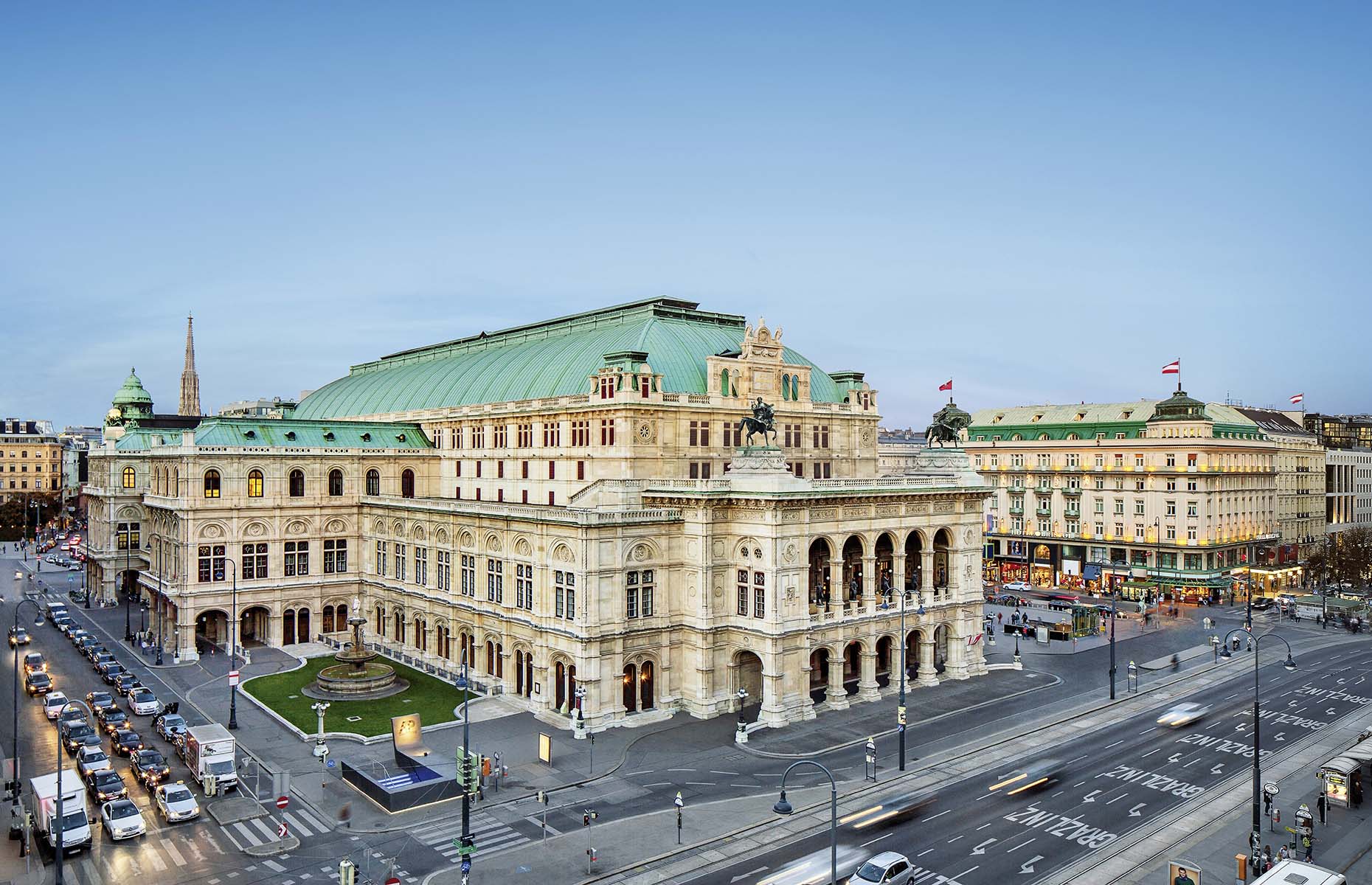 © WienTourismus/Christian Stemper
© WienTourismus/Christian Stemper
READ MORE: A weekend away in Austria's charmer Salzburg
Top things to do in Vienna
Step back in time at Hofburg
Central in both location and its impact on the history of Vienna, Hofburg is a royal complex which once played home to the Habsburgs. First established in the 13th century, it continued to grow and gain new extensions, wings and additions until as late as the start of the 20th century.
Today, the palace complex houses a flurry of museums and you should factor in a few hours' visiting time, depending on how many museums you wish to see, to take in the splendour of Hofburg. Don't miss out on leisurely strolls through Burggarten, once the Habsburgs' private garden, and the Spanish Riding School – an equestrian show performed by the Lipizzaner horses, bread specifically for the ruling family. Go for a morning promenade in Burggarten and you might just see these gleaming white stallions stretching their legs on a casual outing.
Soak up imperial grandeur at Schönbrunn Palace
The Habsburgs' summer residence, Schönbrunn is among Europe's most beautiful palaces and has some of the best-preserved baroque interiors from the time of Maria Theresa, Franz Joseph I and enigmatic Empress Elisabeth of Austria, or Sisi. The history of Austria's imperial past is brought to life via 40 rooms in the palace, as well as the vast gardens, which are open to all.
Also on the grounds of Schönbrunn you'll find the Gloriette with beautiful views of the palace and beyond as well as the enchanting Palmenhuas (built as a replica of the one in Kew Gardens in London). If visiting with kids, Tiergarten is unmissable. Established as a menagerie in 1752, it's the world's oldest continually operating zoo and takes excellent care of its 8,500 residents, from giant pandas and elephants to Siberian tigers and koalas.
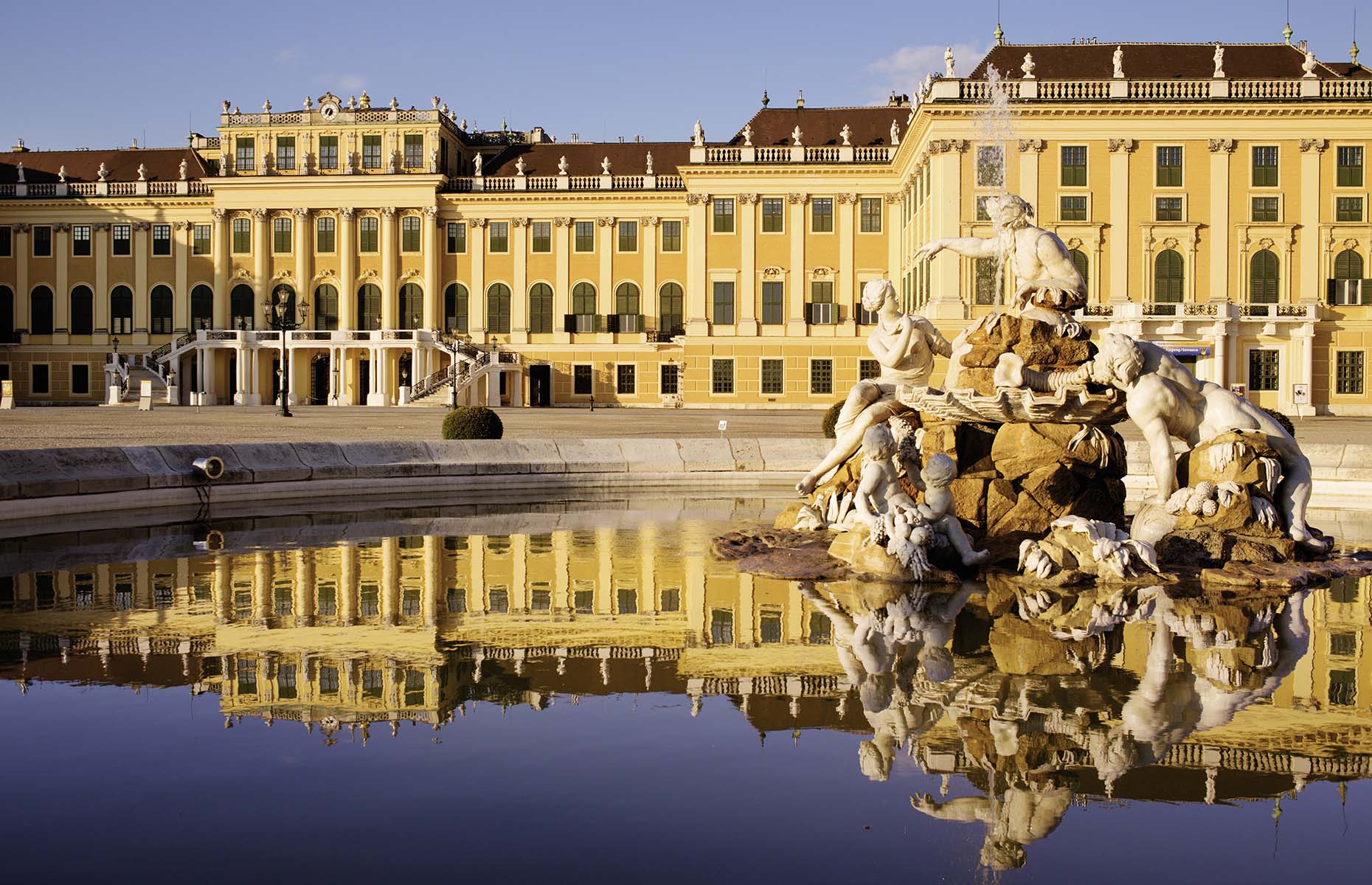 © WienTourismus/Peter Rigaud
© WienTourismus/Peter Rigaud
Sip coffee like a local
Vienna’s historic café culture is famous the world over and you absolutely must experience it for yourself. An entry on UNESCO’s Intangible Cultural Heritage List, the coffee houses have been around since the 17th century and have been dubbed ‘Vienna’s living rooms’ as it was here that people would sit for hours, sipping coffee, perhaps reading a newspaper, and just enjoying a very leisurely attitude to life.
Artists, writers, intellectuals and revolutionaries have all congregated in Vienna’s coffee houses – everyone from Beethoven and Klimt to Freud and Trotsky were regulars – and exchanged ideas, debated and worked. A whole genre of literature is dedicated to works written at these tables, called Kaffeehausliteratur, too.
Step inside the elegant Café Sperl, the traditional Café Central or the historic Café Schwarzenberg for a cake and a cup of brauner (black coffee with a splash of cream) or melange (half-coffee, half-milk and topped with milk froth).
Let loose at Prater
Spread out in Leopoldstadt, Prater is a leafy green park of two halves – Unterer Prater, a woodland where the Habsburgs once used to hunt, and Würstelprater, a pay-per-ride theme park where intermittent screams pierce the air and music blasts from every corner. With approximately 250 attractions and rides, there's everything from a gentle chair-o-plane for the youngest fun-seekers to thrilling rides like the Turbo Boost that spins at 62 miles per hour (100km/h) and Space Shot, which shoots daredevils like bullets at a speed of 59 miles per hour (95km/h). For lots of looping and twisting action, don't miss Boomerang, which goes through a loop headfirst at 53 miles per hour (85km/h) and rushes onto a second, 121-foot-tall (37m) ramp before going through all the twists and turns in reverse.
The one attraction everyone wants to ride though is the Riesenrad. A symbol of Vienna, it's the world's oldest still-operating Ferris wheel that was built in 1897 to celebrate the Golden Jubilee of Emperor Franz Joseph I. The spin takes about 20 minutes and once you've risen to a height of 213 feet (65m), you'll have all of Vienna at your feet.
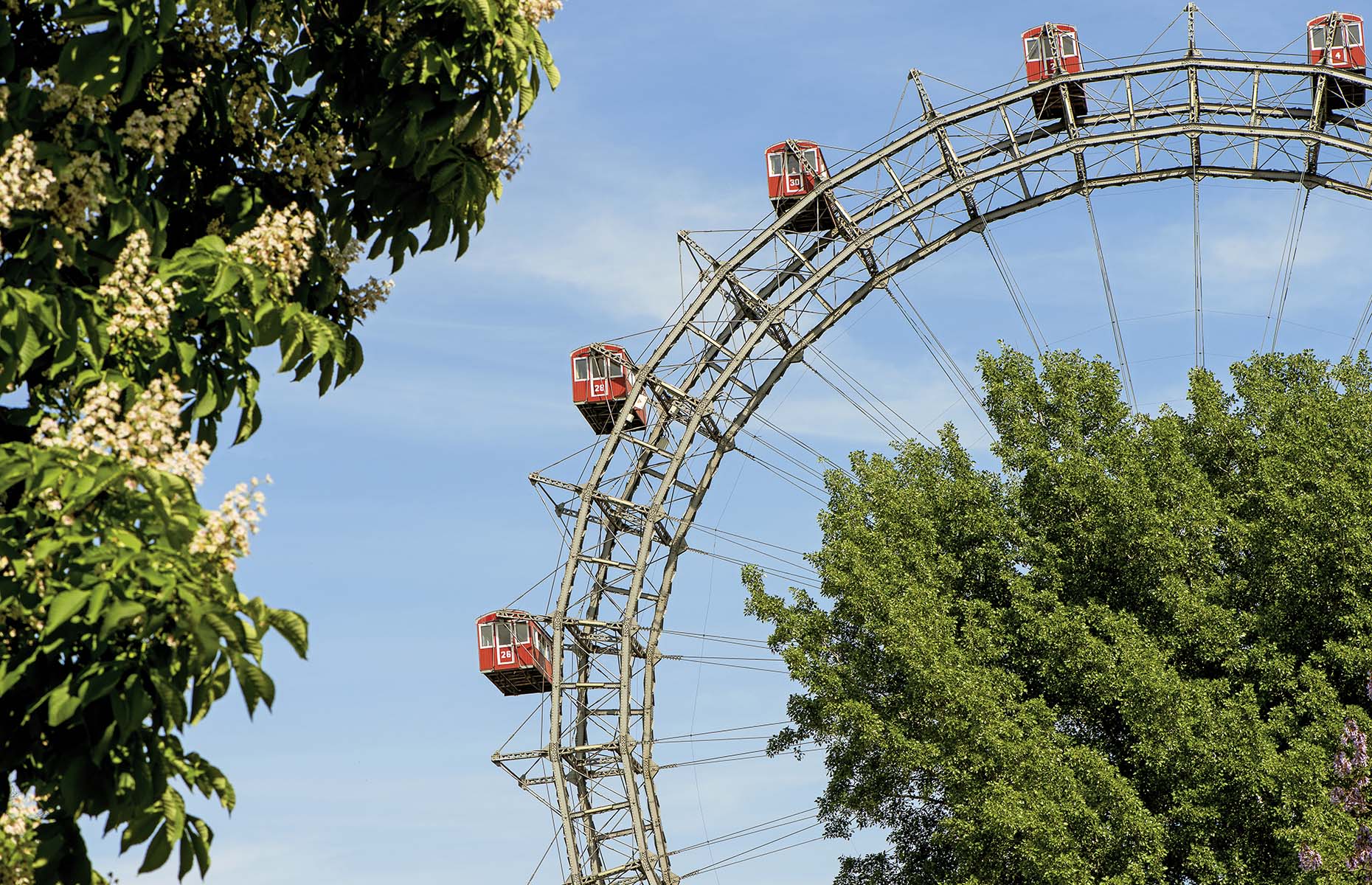 © WienTourismus/Christian Stemper
© WienTourismus/Christian Stemper
Best Vienna museums to visit
Viennese Municipality lists more than 250 museums and collections available to the public in Vienna. It’s very unlikely you’ll be able to see them all so a little strategic planning is a good idea to make sure you’ve not missed out on any you’re keen to visit. From some of the world’s most famous paintings to historic homes and everything else in between, there’s lots to see. Make sure you buy and activate your Vienna City Card before visiting. Not only does it offer free return travel from the airport (with the transfer ticket) and free public transport in Vienna, entry to most museums is also discounted. These are the best Vienna museums you definitely shouldn’t miss.
Kunsthistorisches Museum: one of the Habsburg's most exceptional palaces, the Art History Museum is a breathtaking Neoclassical building that impresses not only with the Old Masters in the Picture Gallery, but also with its sumptuous main staircase, all marble columns, frescoed vaults and gold leaf. Don't miss works by Albrecht Dürer, Vermeer and Reubens, as well as The Tower of Babel by Pieter Bruegel the Elder.
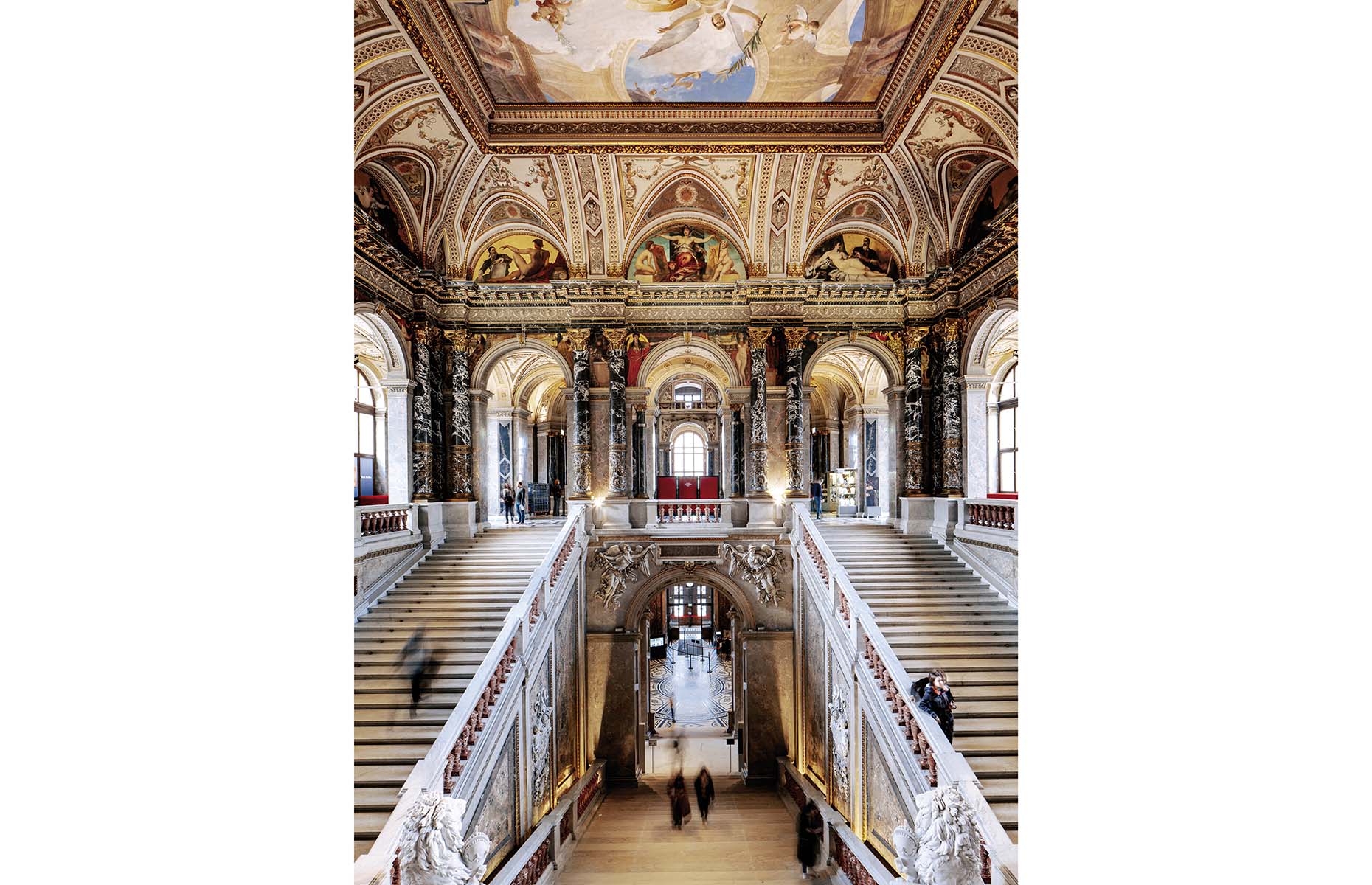 © WienTourismus/Paul Bauer
© WienTourismus/Paul Bauer
Naturalhistorisches Museum: right across from the Kunsthistorisches Museum, an identical palace houses Vienna's Natural History Museum. Covering four billion years of history under one roof, the museum has everything from the world's largest meteorite collection and dinosaur skeletons to a 4.6-foot-wide (1.4m) giant clam and a planetarium to keep kids both big and small entertained.
Sisi Museum: several museums occupy the buildings in the Hofburg, but if you want to see the big-hitters, get the Sisi Museum day ticket, which includes the Imperial Apartments, Sisi Museum and the Imperial Silver Collection. Getting an audio guide is well worth it too as it'll effortlessly guide you through history here. Additionally, you might want to take a peek inside the Imperial Treasury, which holds the imperial crown, a 2,680-carat emerald and one of the nails from the Crucifixion, among other rare religious relics.
Schloss Belvedere: another baroque palace, you might be thinking, but its perfect symmetry, marbled rooms and three-tiered garden are pretty as a picture. Essentially two museums in one, Lower (Unteres) Belvedere is where you'll find trophies, medallions and frescoes commemorating the palace owner Prince Eugen's military victories, while Upper (Oberes) Belvedere is a treasure trove of art. See medieval paintings and a beautiful selection of Realism and Impressionism, including Monet's Garden at Giverny and Van Gogh's Plain at Auvers. The crowning glory is the first-floor Gustav Klimt collection, with works including Judith, Salome and The Kiss all on display.
 © WienTourismus/Paul Bauer
© WienTourismus/Paul Bauer
MuseumsQuartier: a perfect example of how Vienna's historic, imperial spaces are more than happy to co-exist and blend in with contemporary additions. Once the Habsburgs' stables, it's now an innovative cultural space with six museums, a dance centre and a relaxed courtyard with café terraces. Leopold Museum, housing a private collection of mostly 19th-century and modernist Austrian works, and MUMOK, with a fine collection of 20th- and 21st-century art, are standouts.
Albertina: housed in what used to be imperial apartments for guests, Albertina now holds an exceptional collection of modern and contemporary artists. The Water Lily Pond by Claude Monet, Pablo Picasso's Woman in a green hat and Two Dancers by Edgar Degas all hang here. You'll also see works by Magritte, Cézanne, Klimt, Munch and Kandinsky, among others.
Mozarthaus: the great composer's home for three years, Mozarthaus is the only residence to have survived from the 11 years that Mozart spent in Vienna in the late 1700s. Conveniently located in the Old Town, it holds a few original items, like a musical clock for which Mozart is thought to have composed, and a fascinating exhibit on Mozart and his musical contemporaries.
Sigmund Freud Museum: one of the city's most famous homes, this address is considered the birthplace of psychoanalysis. Sigmund Freud, who lived and worked here for 47 years before fleeing the country at the start of the Second World War, and his revolutionary practices are the subject of conceptual art and both permanent and special exhibitions here.
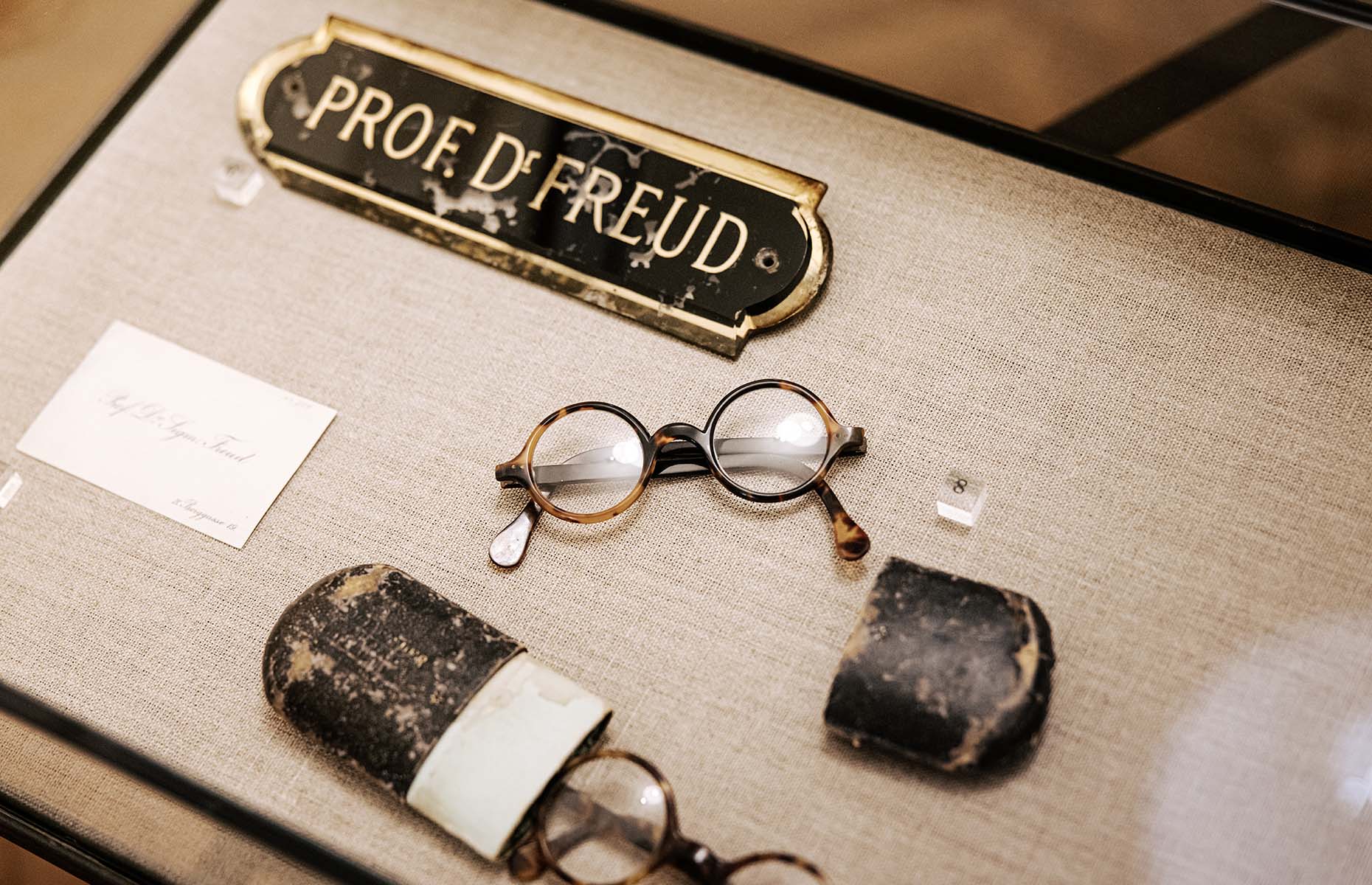 © WienTourismus/Paul Bauer
© WienTourismus/Paul Bauer
READ MORE: Vienna to Venice by night train
Best Vienna hotels
Conveniently located opposite Vienna’s MuseumQuartier, Hotel Gilbert offers easy access to all of Vienna and has some of the city’s most prominent attractions within striking distance. The rooms are a good size with ultra-comfy beds and bathrooms have large rainfall showers. The a la carte breakfast is served in the plant-filled atrium and those who love to snooze will appreciate the 5pm check out (just let the reception know a day before).
For those seeking out the finer things in life, the new Rosewood Vienna is set to open in July 2022. Housed in a renovated 19th-century building, the hotel is located in Petersplatz, just steps away from the delights of Vienna’s Old Town.
If you’d rather be closer to some of the city’s best restaurants, boutique shopping and the famous Naschmarkt, then bed down in the design-led Hotel Josefine. The quirky, Art Deco-inspired hotel is filled with stylish elements, funky decor and offers a highly rated breakfast.
What to eat in Vienna
The food scene in Vienna does not miss a beat, whether that’s time-honoured classics, modern flavours or its café culture. The obvious must-tries include Wiener schnitzel, Sachertorte and plenty of grilled sausages.
The latter were first lugged around the city in carts after the First World War by returning veterans. Bitzinger Würstelstand opposite the opera is widely regarded as the city’s best and occupies the original permanent spot. Glacis Beisl is excellent for schnitzel and goulash in a romantic garden setting while Figlmüller insists it’s home to the city’s best schnitzel. Always served pounded extra-thin and measuring nearly 12 inches (30cm) across, it’s still hanging over the edges of the plate like it did in 1905 when it was first served.
To contrast all the meat-heavy traditional cooking, a wealth of vegetarian and vegan restaurants have been popping up all over the city and there are more excellent tofu schnitzel alternatives than you might think. Michelin-starred Tian and its more casual sibling Tian Bistro are among the best for plant-based dining.
When it comes to the sweet stuff, there’s obviously apfelstrudel and kaiserschmarrn (torn sweet pancake served with icing sugar and stewed plums), but nothing comes quite close to the elegance of Sachertorte. Invented by a 16-year-old chef’s apprentice, Franz Sacher, for a royal banquet, Café Sacher’s cake has remained unchanged since 1832 – a chocolate sponge with two layers of apricot jam, thick chocolate icing and a chocolate seal, served with unsweetened whipped cream. Demel has contested the origins of the cake but gave away their rights in an out-of-court settlement and now serve theirs with a single apricot jam layer and a chocolate triangle, reading ‘Eduard-Sacher-torte’ to distinguish it from the Café Sacher version. Which one’s better is up to you.
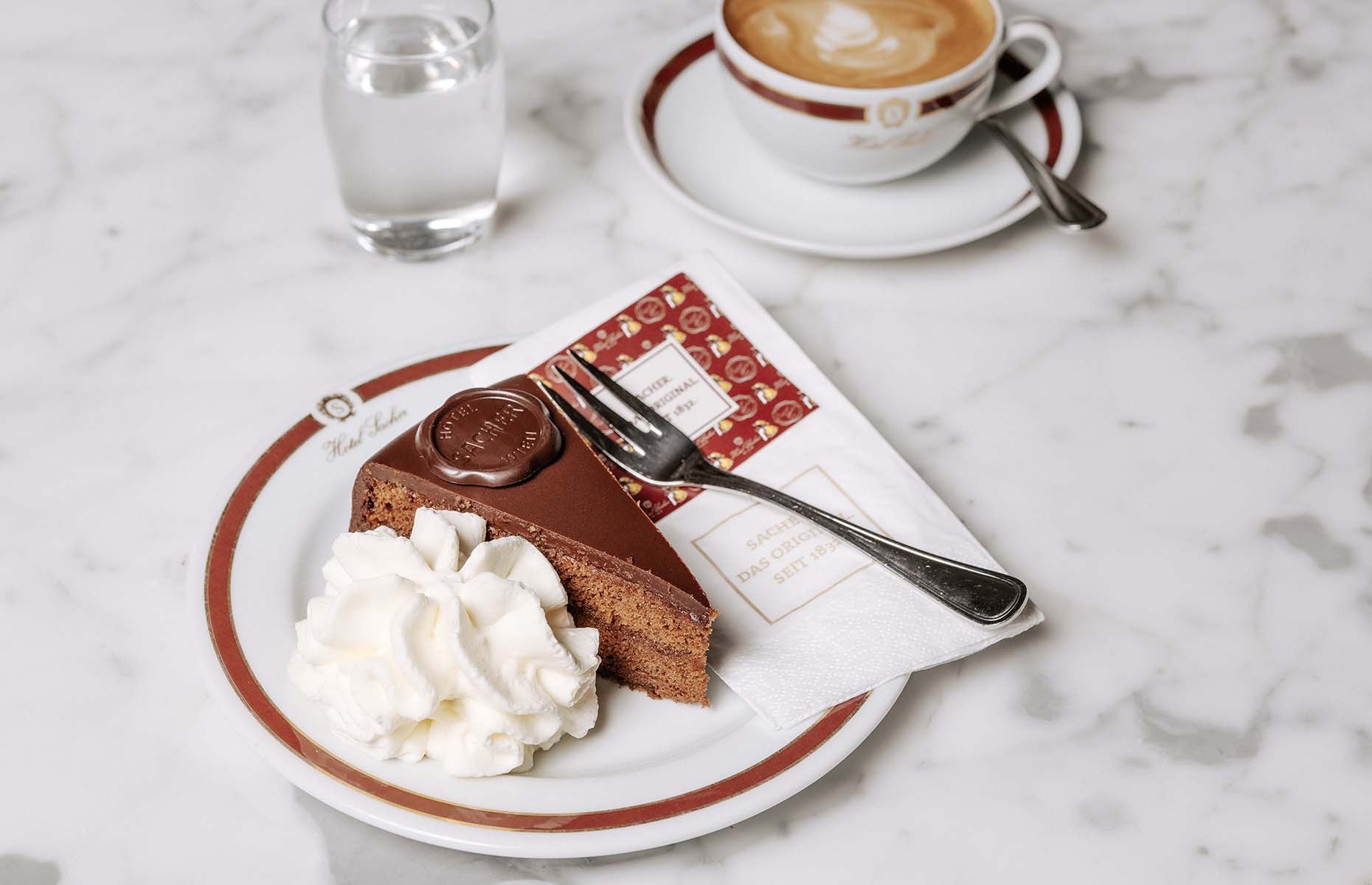 © WienTourismus/Paul Bauer
© WienTourismus/Paul Bauer
How to spend a weekend in Vienna
Day 1
Check-in to: Hotel Gilbert. There’s lots to love about this swish new hotel right in the thick of it, from its casually cool decor to its subtle attention to sustainability, like full-size toiletries, no plastic bags and a plant wall exterior with a green roof. The beds offer some of the best rest you will have had in years and there’s access to a gym and sauna, if you like, too.
Get to know the city with: Rebel Tours. Run by a charismatic brother-sister duo, a walking tour is guaranteed to give you a sense of place and history. Gabi and Basti are full of facts and stories, and a tour with them feels a lot more like a stroll with friends. Choose from eight different tours, covering everything from history and art to food and sport.
Have a coffee break at: Café Sacher. You’ll probably have to queue to sample the delights inside, but persevere, and you’ll be rewarded with elegant draped walls, marble-top tables and, of course, the irresistible Sachertorte.
Go in: Stephansdom. The site of a church since the 12th century, the first glimpse of Stephansdom will really make you gasp. Towering high above the rest of the Old Town, this Gothic masterpiece is breathaking both inside and out. First, marvel at its colourful tiled roof, then make your way inside, gazing at the spectacular main nave and towering baroque high altar. Then climb up the South Tower’s 343 steps for the most spectacular view over Vienna.
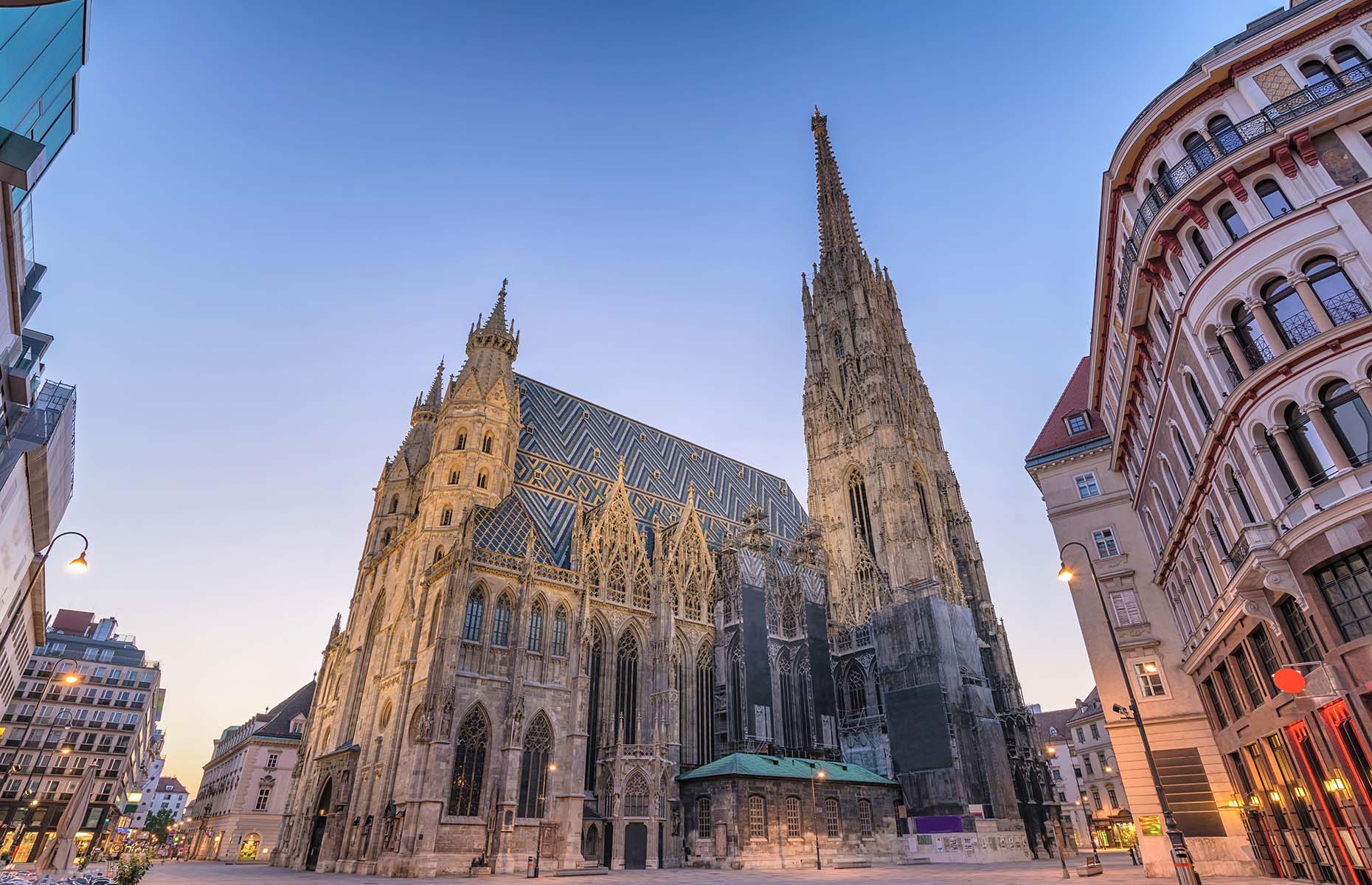 Noppasin Wongchum/Alamy Stock Photo
Noppasin Wongchum/Alamy Stock Photo
Have schnitzel at: Glacis Beisl. Just across the street from Hotel Gilbert, it’s perfect for your first Wiener schnitzel. Make sure you book ahead though as this place gets seriously busy.
Day 2
Start the day at: Naschmarkt. Make your way through Vienna’s most famous market with more than 120 stands, restaurants and sellers. On a Saturday morning, there’s also a flea market that draws in everyone looking for a unique buy.
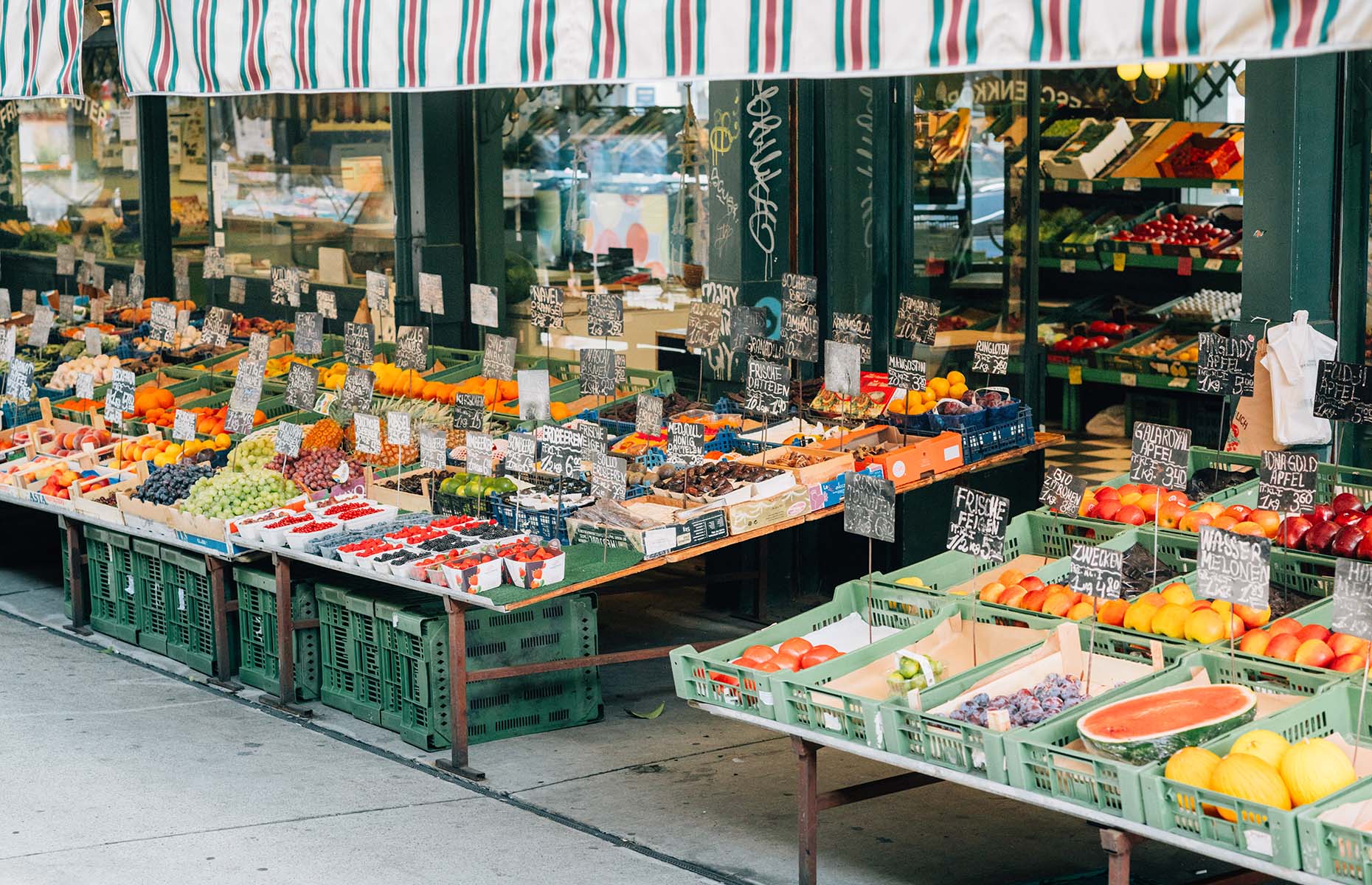 © WienTourismus/Julius Hirtzberger
© WienTourismus/Julius Hirtzberger
Get the U-bahn to: Schönbrunn Palace. Easily accessible from Naschmarkt, Schönbrunn is without a doubt on the world’s most spectacular palaces. Make sure you decide on the ticket type in advance – Imperial and Grand Tour tickets only cover the palace while the Classic Pass Plus covers all of the attractions on the grounds. If you’re only planning to spend the morning at Schönbrun, Classic Pass is best value, offering entry to all the rooms in the palace, Privy Garden, Orangery Garden, Maze and Gloriette.
Pedal your way to: Prater. After a busy morning soaking up the art, it’s time to soak up the sun instead. Hire a bike from Pedal Power and enjoy a casual ride to Prater for lots of fun. Vienna’s cycle network is incredibly well developed, stretching for over a thousand miles (1,654km, to be exact) and connects pretty much all of Vienna’s top attractions.
Have dinner at: Tian Bistro. Challenge your meat-eating tastebuds with the exceptional vegetarian cooking at Tian Bistro. An offshoot of the Michelin-starred Tian, this is a more casual, relaxed space. The Chef’s Garden menu is incredibly good value and you’ll get a sharing three-course meal with dishes like their signature beetroot tartar, roasted celery and coconut rice pudding (note that menu changes weekly and seasonally).
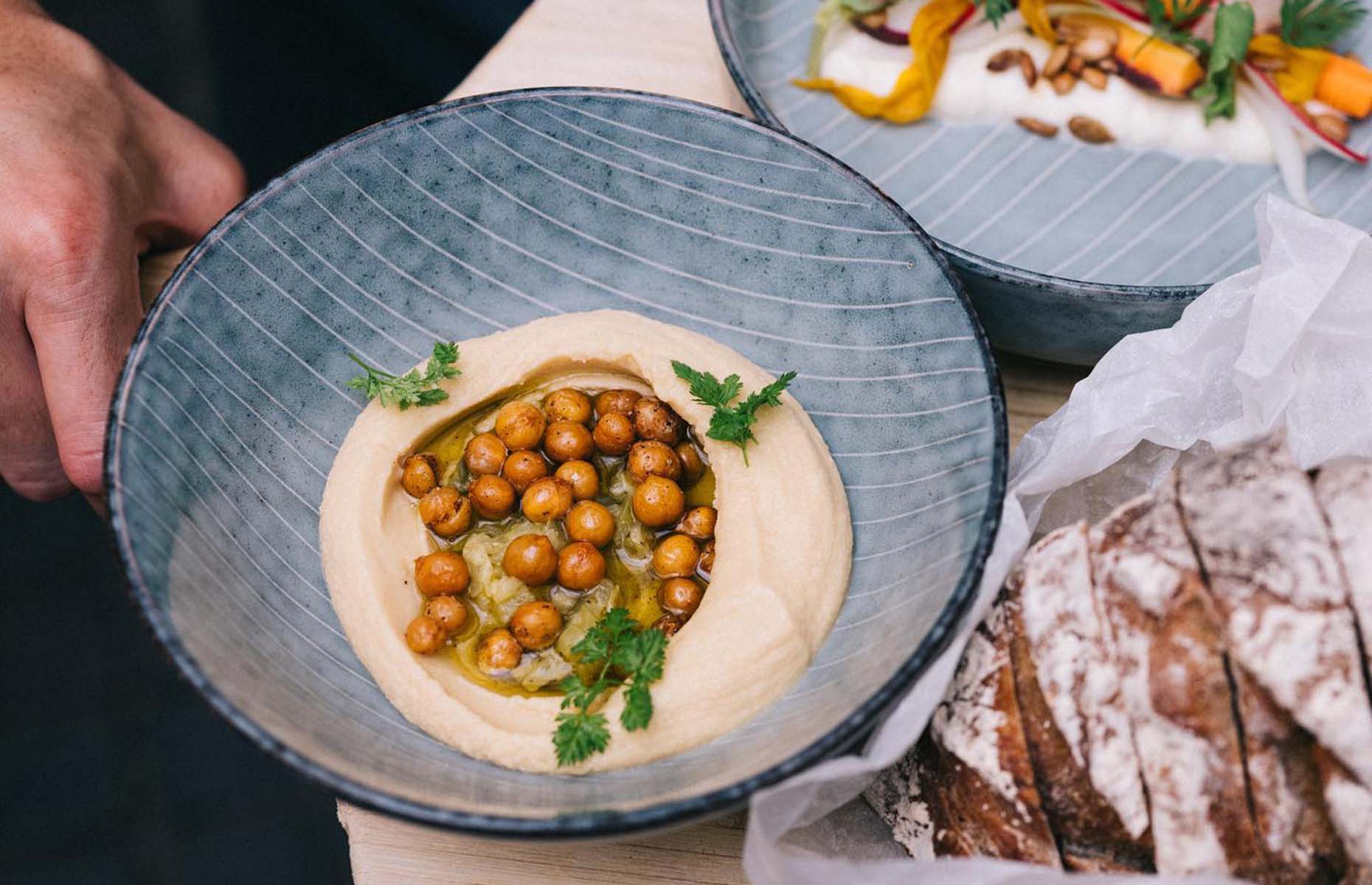 TIAN Bistro am Spittelberg/Facebook
TIAN Bistro am Spittelberg/Facebook
Day 3
Visit: Vienna’s museums. The city offers an overwhelming selection so you’ll have to plan carefully which ones to tick off your list. We’d recommend not missing out on Kunsthistorisches Museum, Albertina and the Kaiserappartements in the Hofburg.
Have a snack at: Bitzinger Würstelstand. Have your Kaserkainer (cheese sausage) with ketchup, mustard and a slice of bread. Notice the Moët & Chandon Champagne bottles on offer – hungry revellers dressed in tuxes and floor-length gowns congregating here for a midnight snack after the opera is not an uncommon sight.
READ MORE: Inside the world's most luxurious palaces
Map of Vienna
Discover all of our favourite places in Vienna with this handy map:
For more information about Vienna please visit the official tourist website. You can find all the information on the Vienna City Card, including the full list of benefits, here.
Lead image: © WienTourismus/Christian Stemper
Comments
Be the first to comment
Do you want to comment on this article? You need to be signed in for this feature
